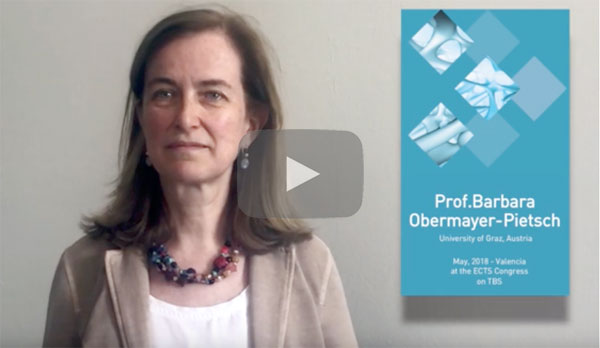We are proud to have the chance to interview Prof. Barbara Obermayer-Pietsch, a world- renowned expert in the field of Osteoporosis, endocrinology and diabetes. She talks about her experience with TBS in the field of Osteoporosis and glucose imbalance and manifest diabetes.
Her experience is highlighting the paradox in patients with Diabetes or pre-diabetes of having an elevated risk or fracture but show a normal or even elevated BMD. Consequently the BMD is not capturing the risk of fracture in these patients. However, the texture parameter TBS that is reflecting the bone quality has been shown to be sensitive to skeletal deterioration in postmenopausal women & in men with diabetes: Various studies have shown that spine TBS predicts osteoporotic fractures in those with diabetes, and captures a larger portion of the diabetes-associated fracture risk than BMD. The studies on BMD, TBS and its relation to fracture risk had been summarized in various reviews e.g. from Epstein et al. (Osteoporosis Int, 2016) and Schacter & Leslie (Calcif Tissue Int, 2016) and various other studies (e.g. (Kanazawa et al. Glycative Stress Research 2017).
The added value of using TBS for diabetic patients for predicting fractures is increasingly confirmed and appeared to be the current most useful imaging approach in clinical routine. Most recently, the International Osteoporosis Society (IOF) includes TBS in its decision tree for the clinical management of diabetes reported in the review article about the diagnosis and management of bone fragility in diabetes from the Bone and Diabetes Working group of IOF (Ferrari et al. 2018, Osteoporosis Int, 2018).
Prof. Obermayer-Pietsch put light on even one step further as her observations confirm that divergent results of BMD and TBS make it possible for her to detect patients that have not been diagnosed with diabetes yet – even though they are suffering from it. In fact, patients with low TBS were positive to the glycohemoglobin test (high levels of glycated haemoglobin A1c in blood), showing that TBS is a good indicator of poor glycemic control (Neumann et al, Osteoporos Int 2016) and that TBS is influenced by diabetes duration (Caffarelli et al. Calcif Tissue Int, 2017). Having these results, makes it possible now to capture patients at an early phase of their diabetes. These observations has been already done by other experts of the field, e.g. Prof. Heinrich Resch, Vienna (see his last video on TBS on the Medimaps youtube channel- link here).
The added value of TBS in patients with Diabetes works in the direction of predicting the fracture risk more accurately but moreover it could also detect patients that are not diagnosed with diabetes yet and could therefore improve the osteoporosis AND the diabetes management.

